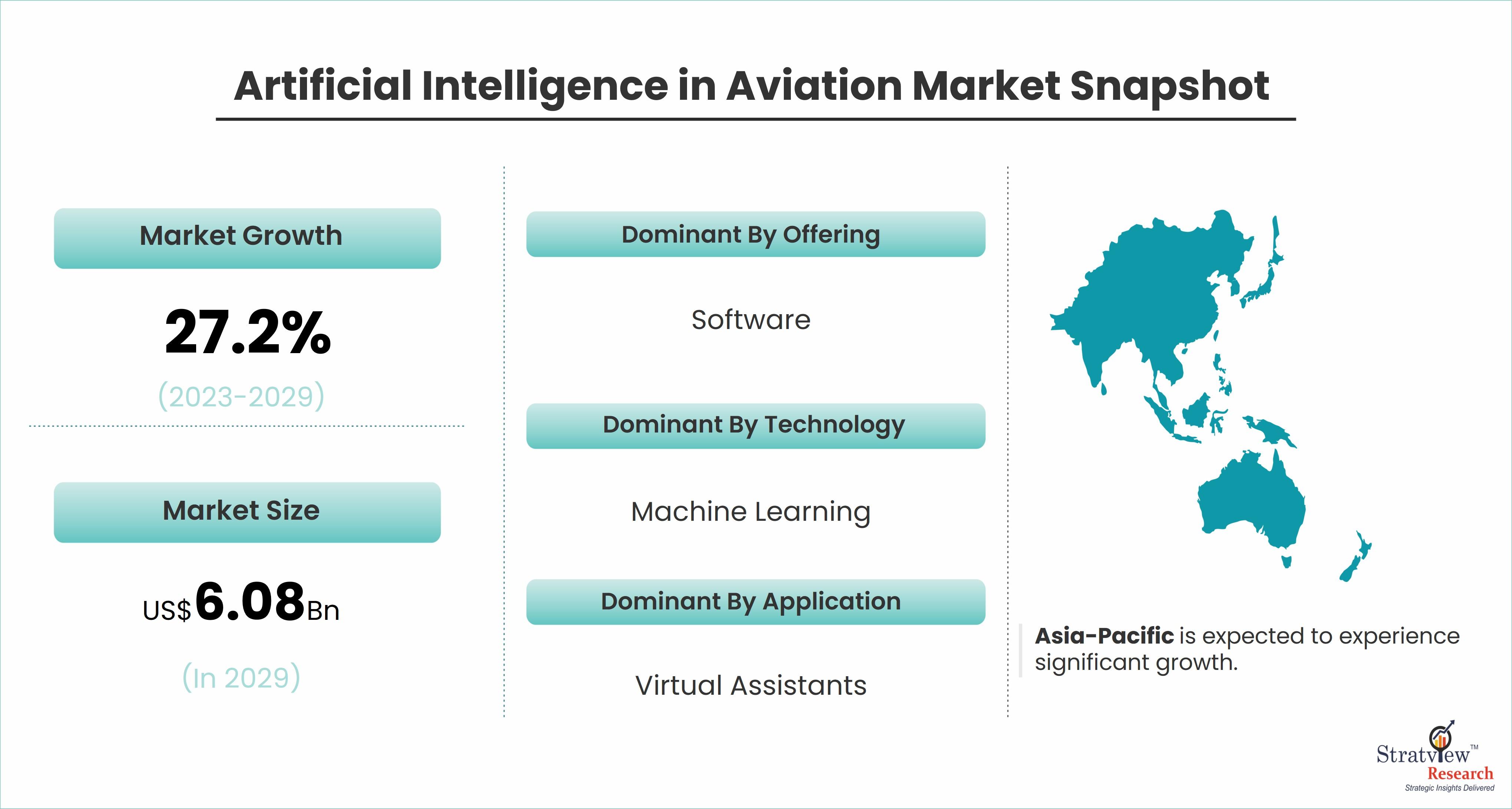According to Stratview Research, the artificial intelligence in aviation market was estimated at USD 1.13 billion in 2022 and is likely to grow at a CAGR of 27.2% during 2023-2029 to reach USD 6.08 billion in 2029.
In the vast expanse of the aviation industry, the advent of Artificial Intelligence (AI) has emerged as a transformative force, reshaping the way we fly, maintain aircraft, and manage operations. As we stand on the brink of a new era, this article takes a closer look at how AI is navigating the future of aviation, unraveling its profound impact on safety, efficiency, and innovation.
Artificial Intelligence in Flight Operations:
Enhancing Safety Measures: Safety has always been a paramount concern in aviation. AI is revolutionizing safety measures by introducing predictive maintenance models that anticipate potential issues before they escalate. This proactive approach not only enhances passenger safety but also minimizes downtime for airlines.
Optimizing Flight Paths: Artificial Intelligence algorithms are adept at analyzing vast amounts of data in real-time, enabling the optimization of flight paths for fuel efficiency. By considering weather patterns, air traffic, and other variables, AI ensures that flights are not only punctual but also environmentally sustainable, contributing to cost savings and reduced carbon emissions.
Artificial Intelligence in Aircraft Maintenance:
Predictive Maintenance: AI-driven predictive maintenance is transforming the way aircraft are serviced. By analyzing historical data and real-time performance metrics, Artificial Intelligence algorithms can predict when components are likely to fail, allowing airlines to schedule maintenance proactively and reduce unplanned downtime.
Condition-Based Monitoring: Condition-based monitoring, facilitated by Artificial Intelligence, involves continuous tracking of aircraft components during flight. This real-time monitoring allows for the immediate identification of anomalies or potential issues, enabling timely intervention and preventing the escalation of problems.
AI in Passenger Experience:
Personalized Travel Experiences: Artificial Intelligence is bringing personalization to the passenger experience. From personalized in-flight entertainment recommendations to customized travel itineraries based on individual preferences, AI ensures that passengers feel more connected and engaged throughout their journey.
Facial Recognition and Biometrics: Streamlining airport processes, AI-driven facial recognition and biometric technologies are simplifying check-ins, security screenings, and boarding procedures. This not only enhances security measures but also expedites the overall travel experience for passengers.
AI in Air Traffic Management:
Traffic Flow Optimization: Managing the complex web of air traffic requires precision and efficiency. AI algorithms analyze real-time data to optimize air traffic flow, reducing congestion and improving overall airspace management. This leads to smoother operations and minimized delays.
Automated Decision-Making: Artificial Intelligence is increasingly involved in automated decision-making processes in air traffic control. From route adjustments to conflict resolution, Artificial Intelligence systems assist air traffic controllers in making informed decisions swiftly, contributing to a safer and more efficient air traffic management system.
Conclusion:
As we navigate the future of the aviation industry, it's clear that Artificial Intelligence is not merely a technological addition but a fundamental transformational force. The impact of Artificial Intelligence on safety, efficiency, and the overall passenger experience is redefining the skies. Navigating the future with Artificial Intelligence in the aviation industry holds the promise of safer flights, more efficient operations, and a travel experience that is not only seamless but also tailored to the preferences of each passenger. As technology continues to advance, the collaboration between artificial intelligence and aviation is set to soar to new heights, shaping the future of air travel in ways we are only beginning to comprehend.





